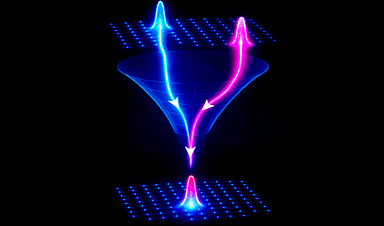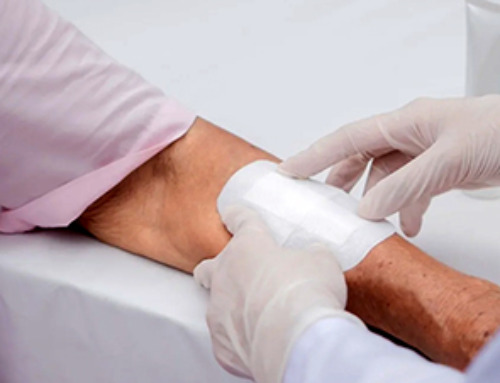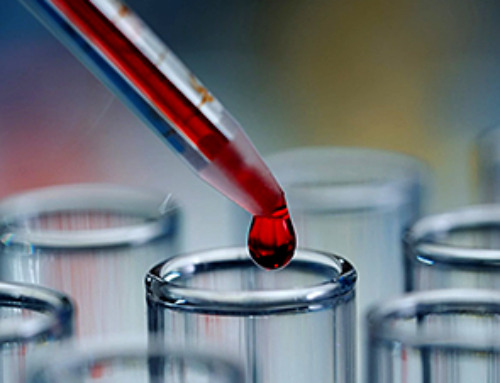| Scientists are building a new super-resolution microscope that uses laser light to study the inner workings and behaviours of superbugs to gain new insights into how they cause disease. | |
| The microscope will allow scientists to peer into bacteria like Streptococcus Pneumoniae at a molecular-scale resolution – showing up objects smaller than 10,000th the thickness of a sheet of paper. | |
| A leading cause of bacterial pneumonia, meningitis, and sepsis, Streptococcus Pneumoniae bacteria are estimated to have caused around 335,000 deaths in children aged five years and under in 2015 worldwide. |
| Current technologies do not allow a resolution that enables thorough studies of bacterial properties that affect disease development. | |
| But now, this super-resolution microscope uses laser light to illuminate proteins at incredibly high resolutions, allowing scientists to gain new insights into what makes these potentially deadly bacteria so pathogenic. | |
| Although electron microscopes can show minute detail at the atomic level, they cannot analyse live specimens: electrons can easily be deflected by molecules in the air, meaning any bacteria under inspection must be held in a vacuum. Therefore super-resolution microscopes are far more superior for biological analysis. | |
| Called the “NANO-scale Visualisation to understand Bacterial virulence and invasiveness – based on fluorescence NANOscopy and VIBrational microscopy” (or ‘NanoVIB’ for short), the project will shed new light on how superbugs can cause disease, thereby providing the basis for the development of new antimicrobials to treat bacterial infections. | |
| In a bid to understand how bacteria cause disease, the European Commission has granted this health consortium €5,635,529 via the Photonics Public Private Partnership to build this super-resolution microscope. | |
Ten-fold Resolution |
|
| While super-resolution microscopes already exist, the NanoVIB team proposes to make a new device with unrivalled resolution capable of revealing the intricate, detailed molecular mechanisms underlying inter-and intracellular processes and disease. | |
| Project coordinator, Professor Jerker Widengren, said: “We expect our new microscope prototype to be a next-generation super-resolution system, making it possible to image cellular proteins marked with fluorescence emitters (fluorophores) with a ten-fold higher resolution than with any other fluorescence microscopy technique. | |
| With the help of advanced laser, detector and microscopy technologies that will be developed in the project, super-resolution localisation patterns of specific proteins will be overlaid with light-scattering images, correlating these patterns with local structures and chemical conditions in the bacteria. | |
| “Using laser light, this new microscope will show how bacterial proteins localise on the surface of bacteria, allowing scientists to study the interaction of the pathogen with immune and host cells. | |
| It works based on the so-called MINFLUX concept, where infrared laser light excites fluorophore-labelled molecules in a triangulated manner – leading to an increased resolution. The user can then fine-tune the microscopic imaging to previously unimaginable resolutions. | |
| “MINFLUX microscopy will make it possible to resolve how certain pneumococcal surface proteins are distributed on the bacteria under different cell division stages, and whether these proteins are localised in such a way that specific, extra sensitive surface regions of the bacteria, a critical step of the cell division, are protected from immune activation,” said Widengren. | |
European Research Ecosystem |
|
| The NanoVIB team took their inspiration from a previous EU-funded project, Fluodiamon, which analysed how specific proteins are spatially distributed in breast and prostate cancer cells compared to those in corresponding non-cancer cells, demonstrating a new basis for cancer diagnosis. | |
| “The goal of the NanoVIB project is to retrieve information, which is not within reach by any other microscopic or photonics-based technique. We will demonstrate how cellular nanoscale protein localisation patterns can be resolved, which will help us reveal bacterial disease mechanisms and are likely to be of considerable relevance for many other diseases. | |
| “These studies could shed new light on how specific surface proteins of these bacteria are spatially distributed on the cells and provide important evidence that the virulence (capacity to generate disease) and invasiveness of these bacteria are strongly coupled to such spatial distribution patterns.” |
News
Nanotech Blocks Infection and Speed Up Chronic Wound Recovery
A new nanotech-based formulation using quercetin and omega-3 fatty acids shows promise in halting bacterial biofilms and boosting skin cell repair. Scientists have developed a nanotechnology-based treatment to fight bacterial biofilms in wound infections. The [...]
Researchers propose five key questions for effective adoption of AI in clinical practice
While Artificial Intelligence (AI) can be a powerful tool that physicians can use to help diagnose their patients and has great potential to improve accuracy, efficiency and patient safety, it has its drawbacks. It [...]
Advancements and clinical translation of intelligent nanodrugs for breast cancer treatment
A comprehensive review in "Biofunct. Mater." meticulously details the most recent advancements and clinical translation of intelligent nanodrugs for breast cancer treatment. This paper presents an exhaustive overview of subtype-specific nanostrategies, the clinical benefits [...]
It’s Not “All in Your Head”: Scientists Develop Revolutionary Blood Test for Chronic Fatigue Syndrome
A 96% accurate blood test for ME/CFS could transform diagnosis and pave the way for future long COVID detection. Researchers from the University of East Anglia and Oxford Biodynamics have created a highly accurate [...]
How Far Can the Body Go? Scientists Find the Ultimate Limit of Human Endurance
Even the most elite endurance athletes can’t outrun biology. A new study finds that humans hit a metabolic ceiling at about 2.5 times their resting energy burn. When ultra-runners take on races that last [...]
World’s Rivers “Overdosing” on Human Antibiotics, Study Finds
Researchers estimate that approximately 8,500 tons of antibiotics enter river systems each year after passing through the human body and wastewater treatment processes. Rivers spanning millions of kilometers across the globe are contaminated with [...]
Yale Scientists Solve a Century-Old Brain Wave Mystery
Yale scientists traced gamma brain waves to thalamus-cortex interactions. The discovery could reveal how brain rhythms shape perception and disease. For more than a century, scientists have observed rhythmic waves of synchronized neuronal activity [...]
Can introducing peanuts early prevent allergies? Real-world data confirms it helps
New evidence from a large U.S. primary care network shows that early peanut introduction, endorsed in 2015 and 2017 guidelines, was followed by a marked decline in clinician-diagnosed peanut and overall food allergies among [...]
Nanoparticle blueprints reveal path to smarter medicines
Lipid nanoparticles (LNPs) are the delivery vehicles of modern medicine, carrying cancer drugs, gene therapies and vaccines into cells. Until recently, many scientists assumed that all LNPs followed more or less the same blueprint, [...]
How nanomedicine and AI are teaming up to tackle neurodegenerative diseases
When I first realized the scale of the challenge posed by neurodegenerative diseases, such as Alzheimer's, Parkinson's disease and amyotrophic lateral sclerosis (ALS), I felt simultaneously humbled and motivated. These disorders are not caused [...]
Self-Organizing Light Could Transform Computing and Communications
USC engineers have demonstrated a new kind of optical device that lets light organize its own route using the principles of thermodynamics. Instead of relying on switches or digital control, the light finds its own [...]
Groundbreaking New Way of Measuring Blood Pressure Could Save Thousands of Lives
A new method that improves the accuracy of interpreting blood pressure measurements taken at the ankle could be vital for individuals who are unable to have their blood pressure measured on the arm. A newly developed [...]
Scientist tackles key roadblock for AI in drug discovery
The drug development pipeline is a costly and lengthy process. Identifying high-quality "hit" compounds—those with high potency, selectivity, and favorable metabolic properties—at the earliest stages is important for reducing cost and accelerating the path [...]
Nanoplastics with environmental coatings can sneak past the skin’s defenses
Plastic is ubiquitous in the modern world, and it's notorious for taking a long time to completely break down in the environment - if it ever does. But even without breaking down completely, plastic [...]
Chernobyl scientists discover black fungus feeding on deadly radiation
It looks pretty sinister, but it might actually be incredibly helpful When reactor number four in Chernobyl exploded, it triggered the worst nuclear disaster in history, one which the surrounding area still has not [...]
Long COVID Is Taking A Silent Toll On Mental Health, Here’s What Experts Say
Months after recovering from COVID-19, many people continue to feel unwell. They speak of exhaustion that doesn’t fade, difficulty breathing, or an unsettling mental haze. What’s becoming increasingly clear is that recovery from the [...]





















